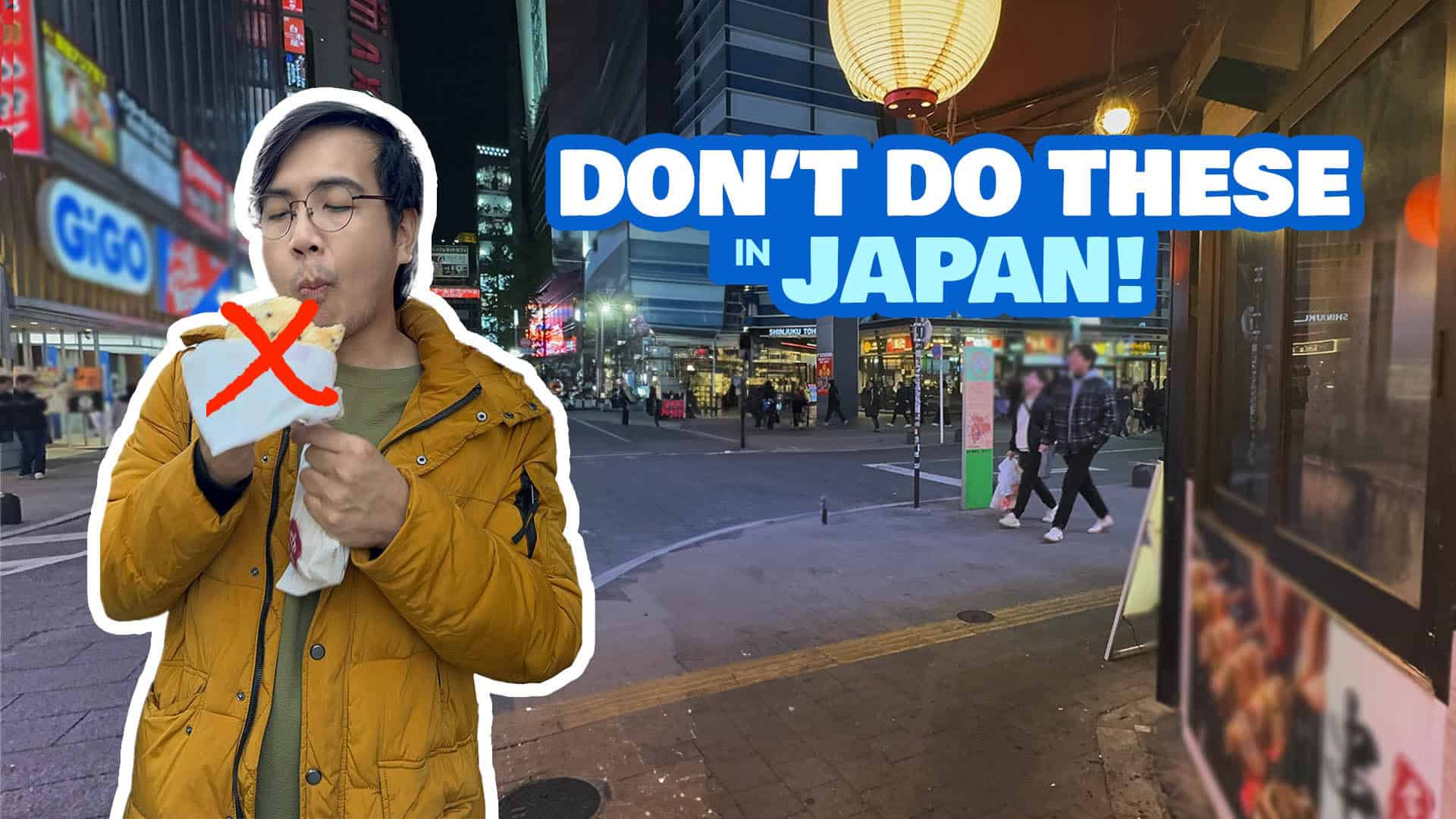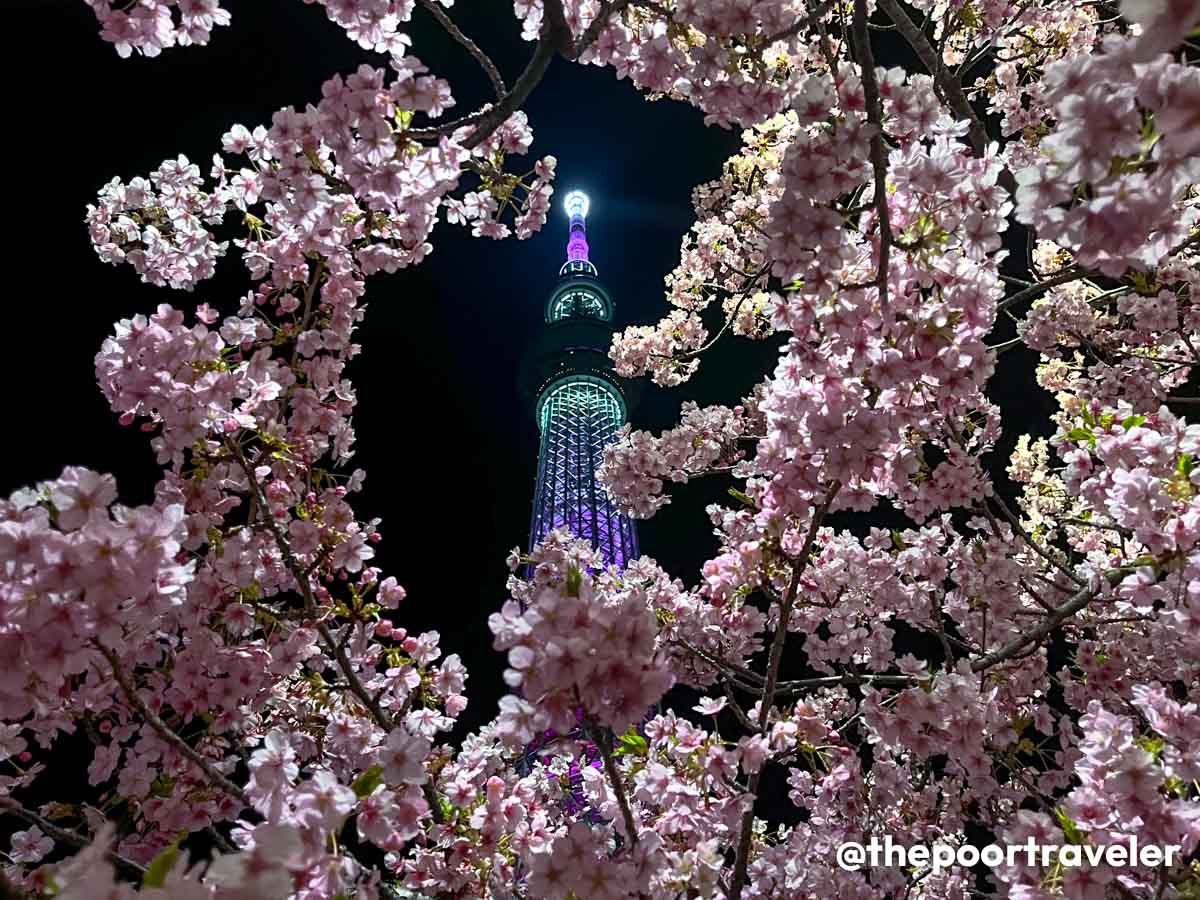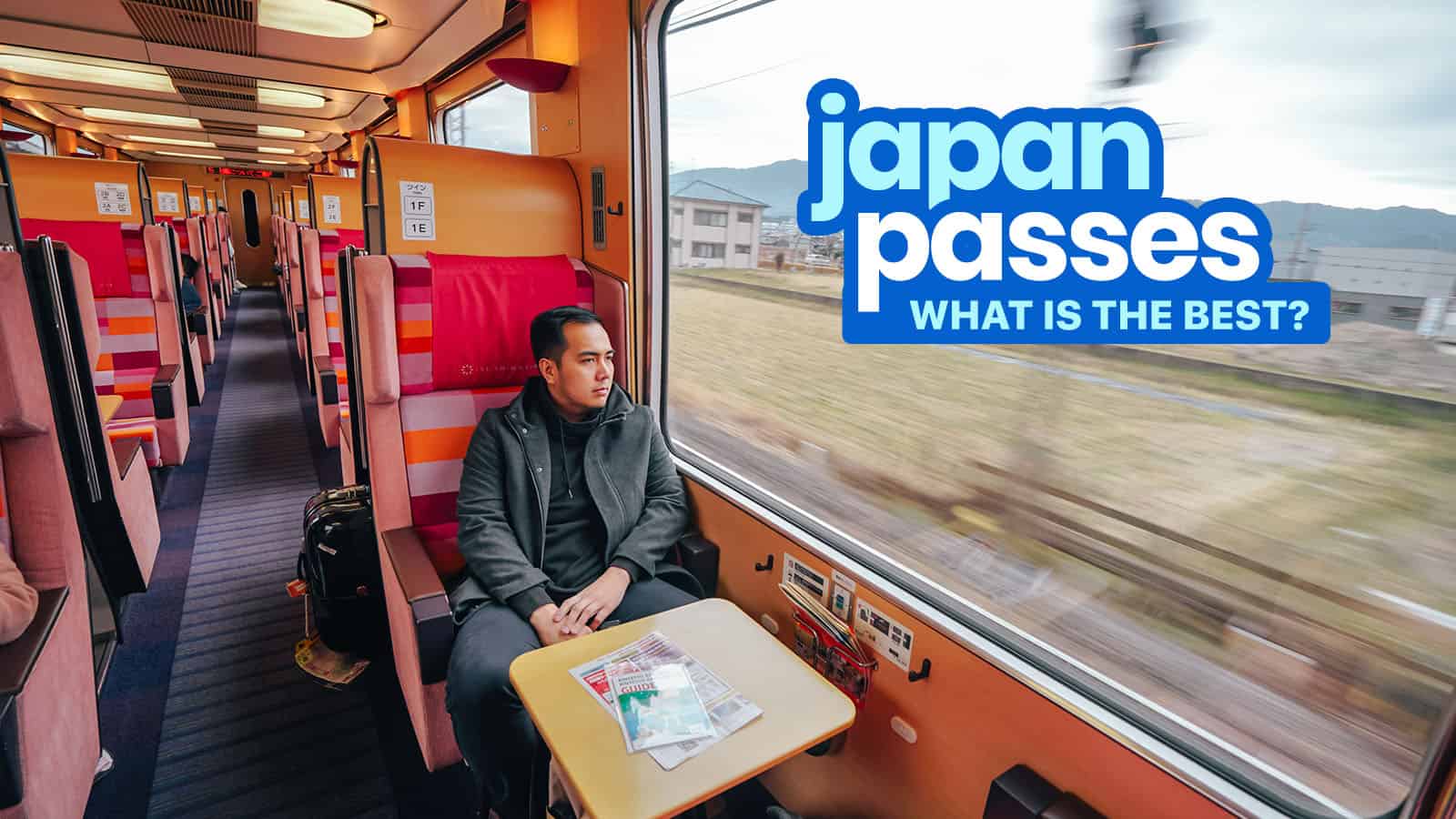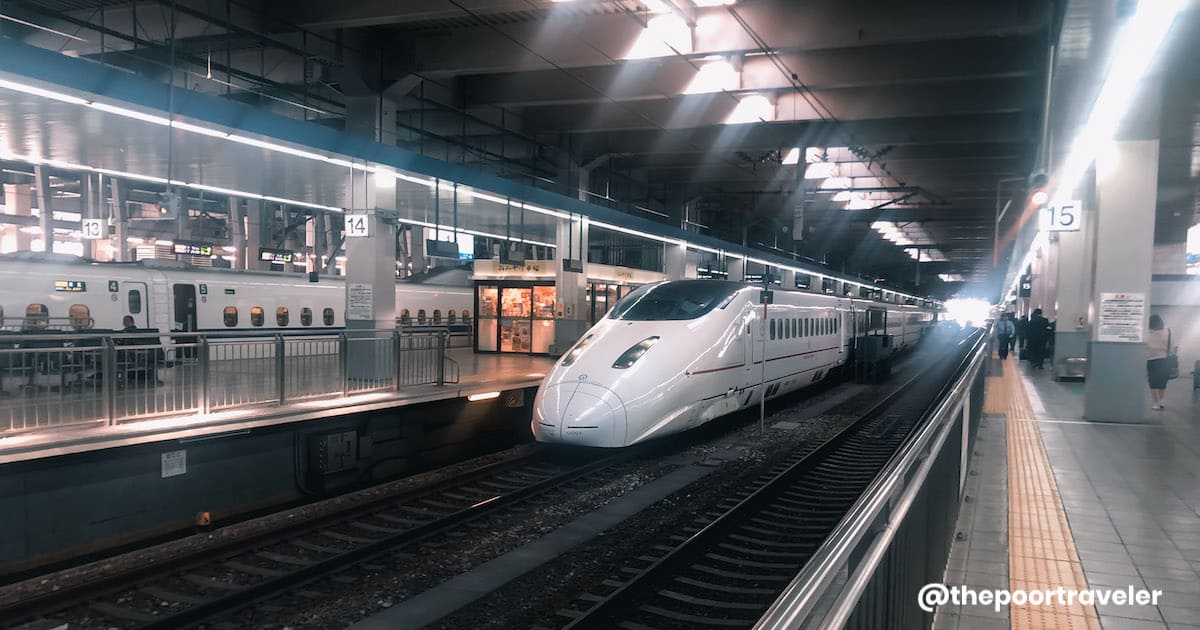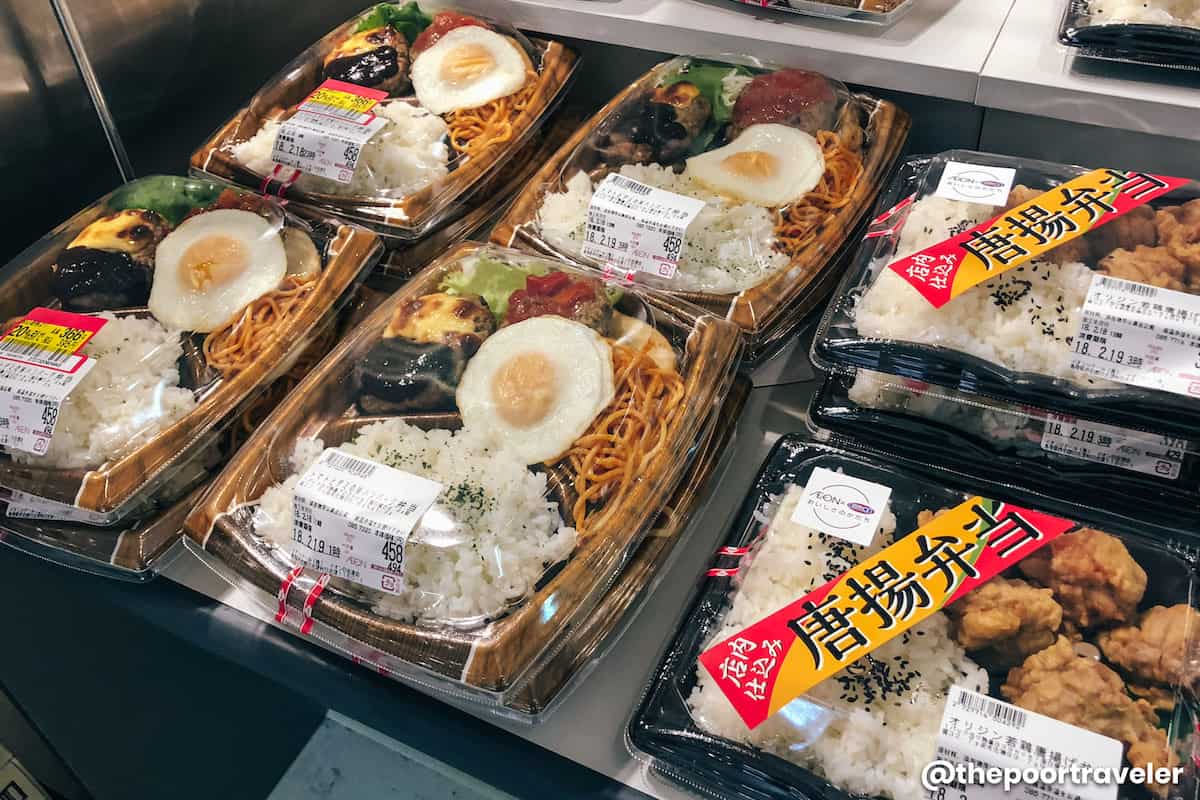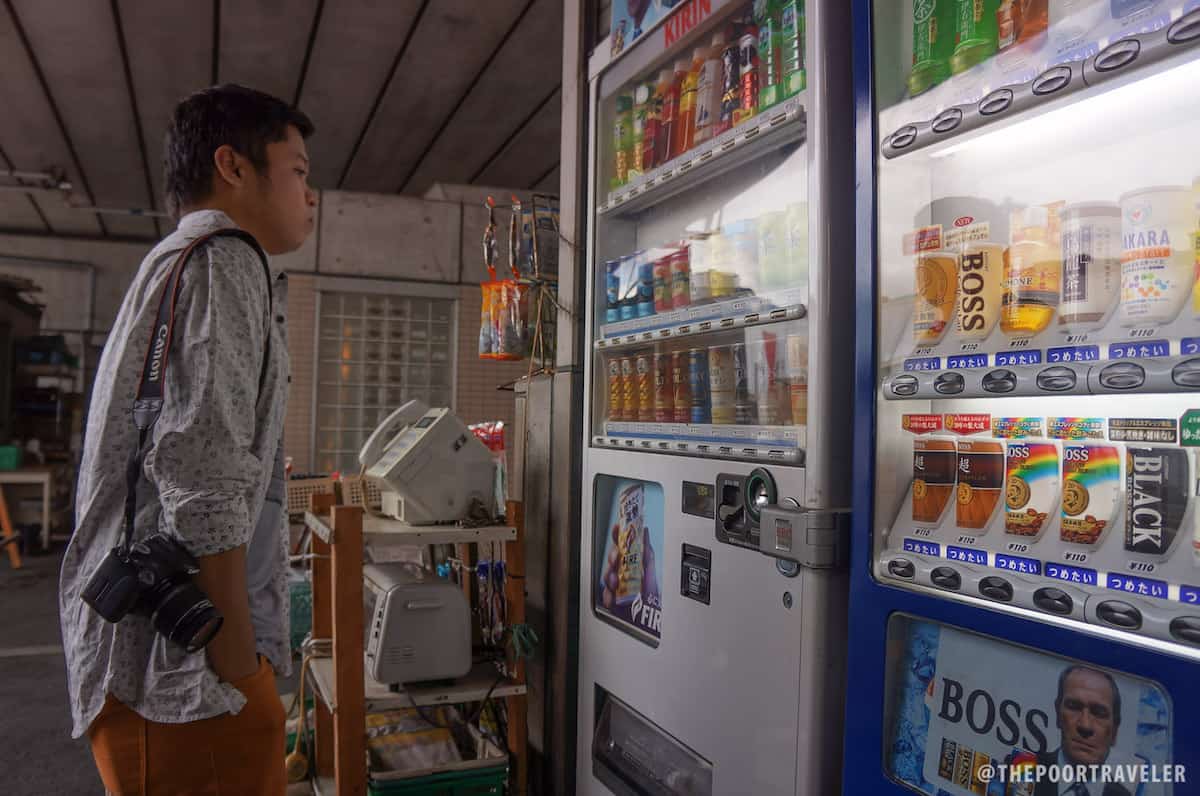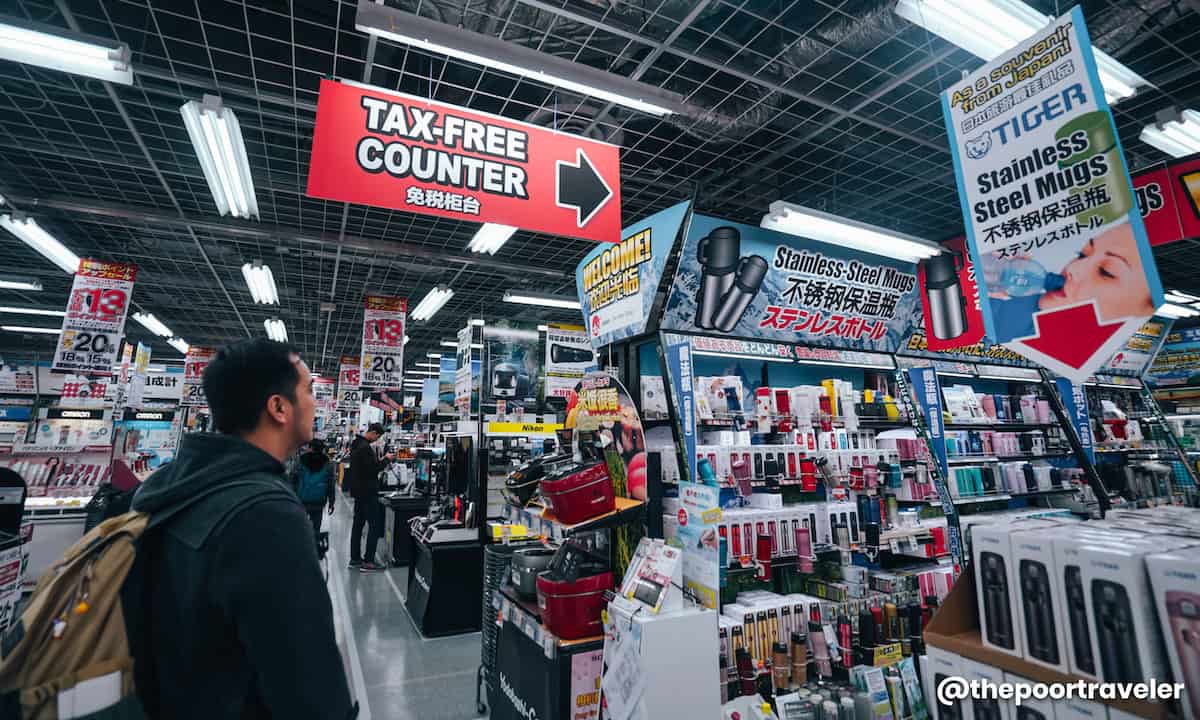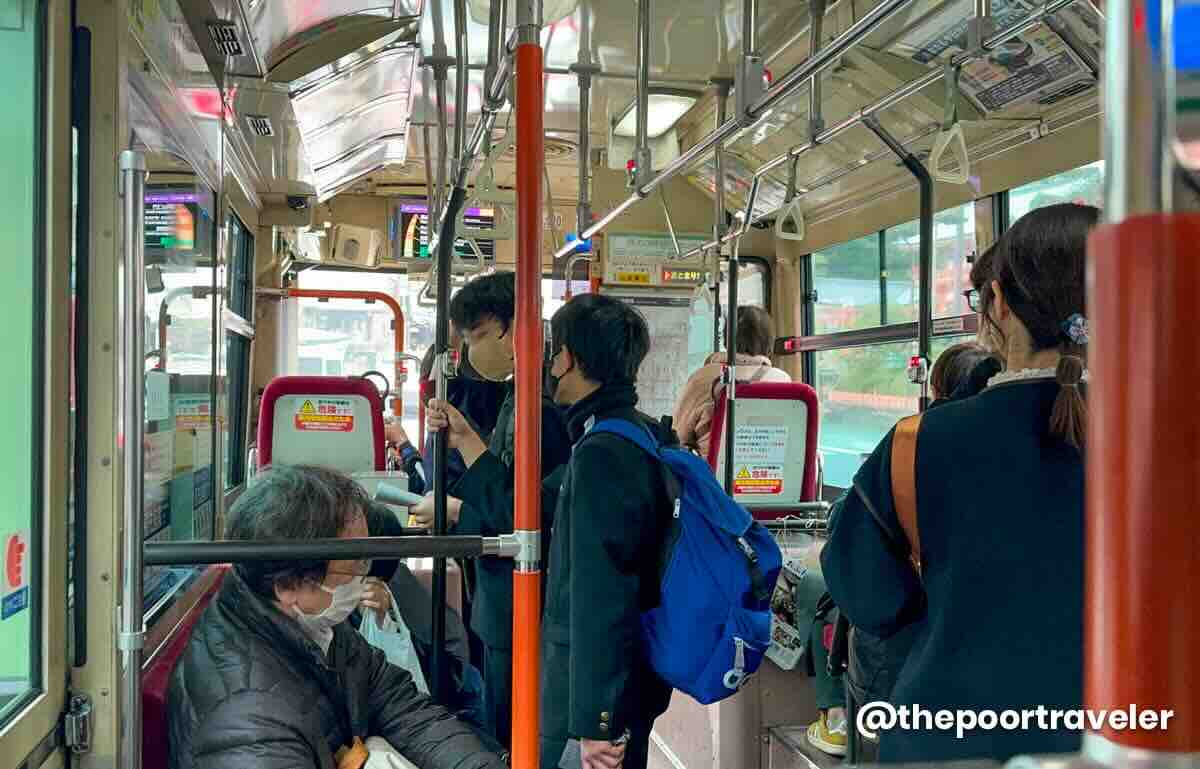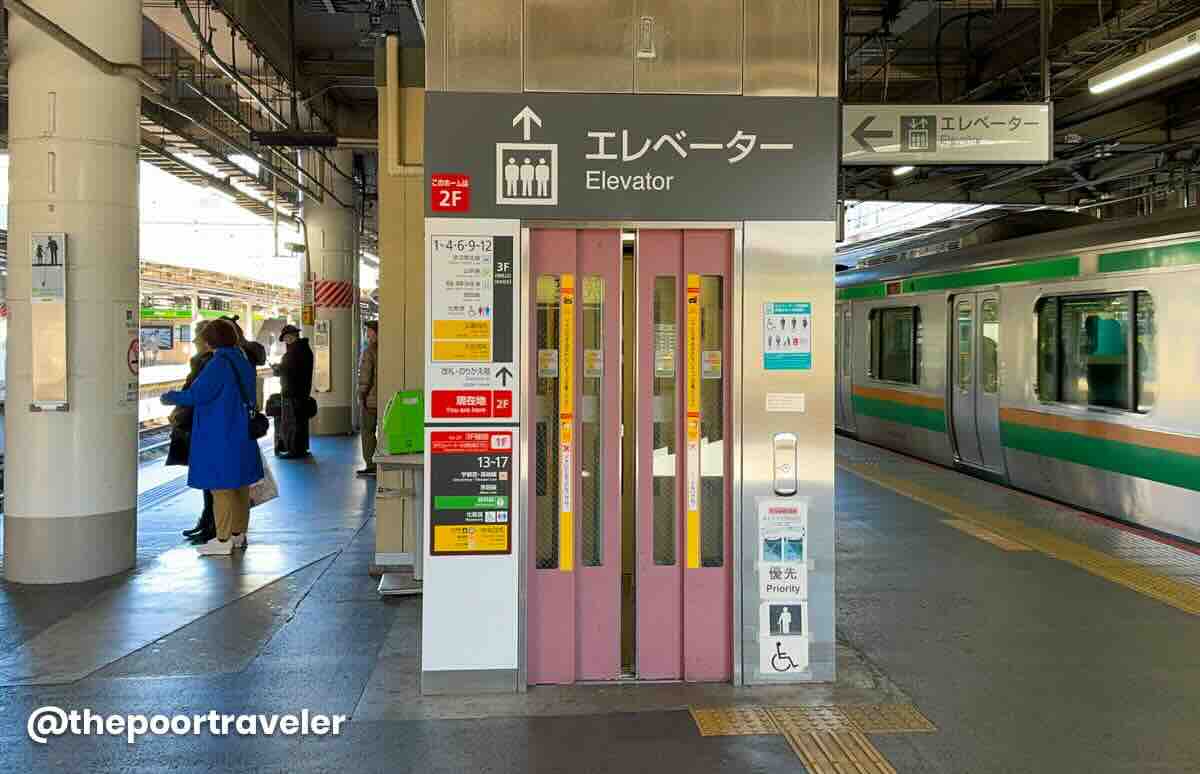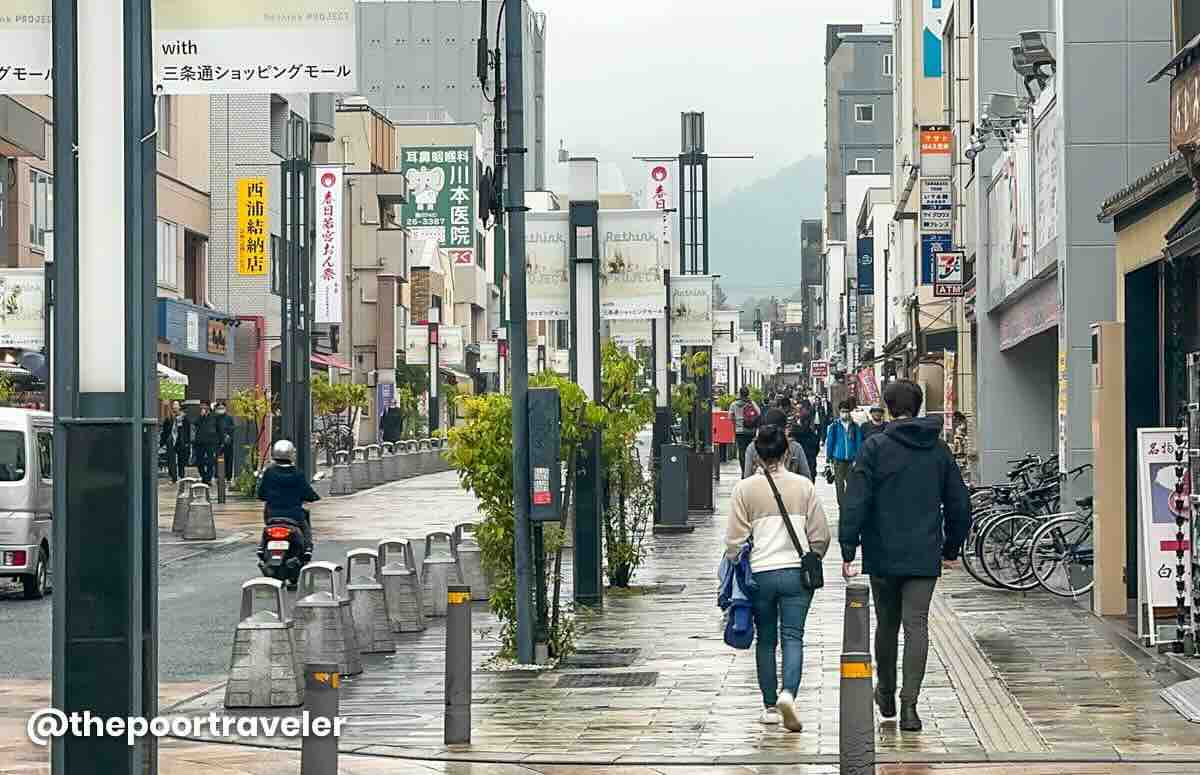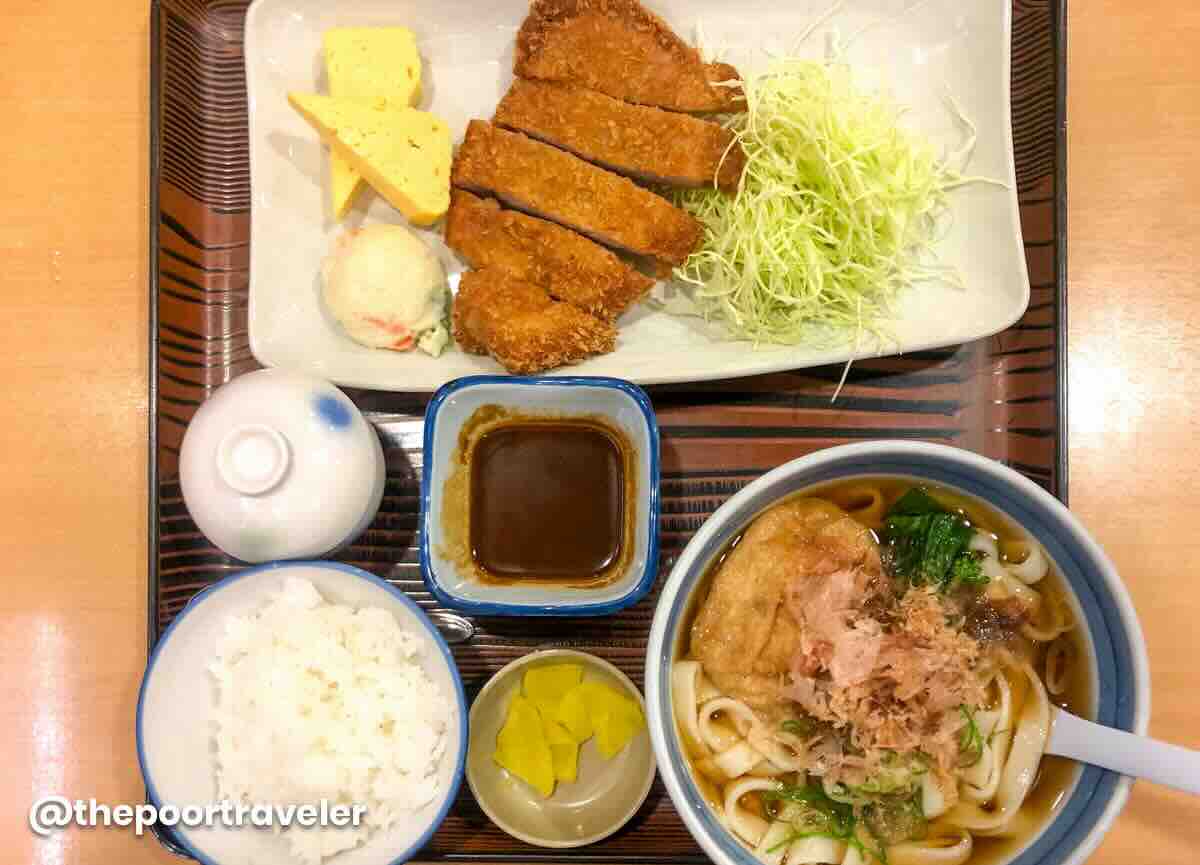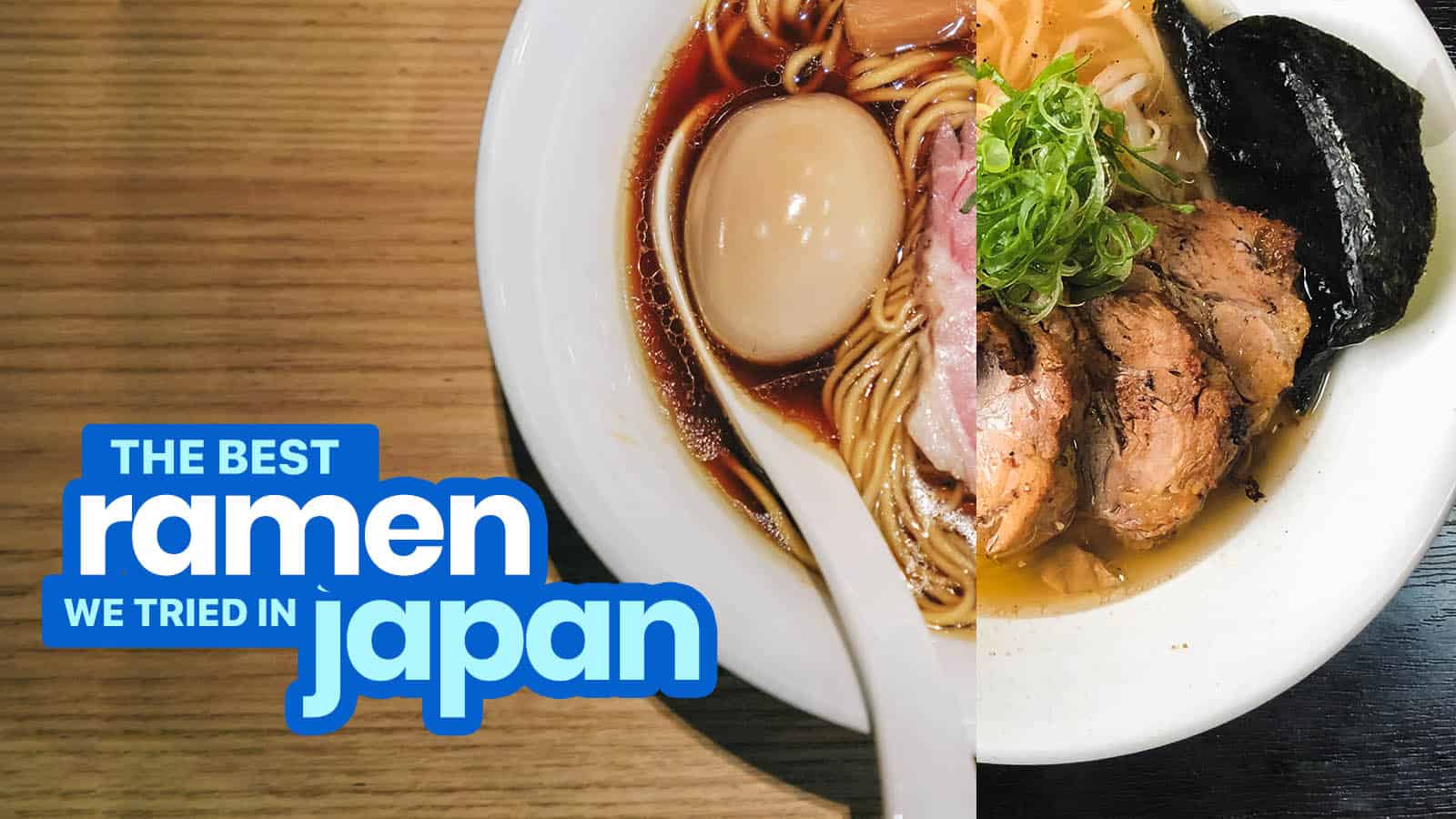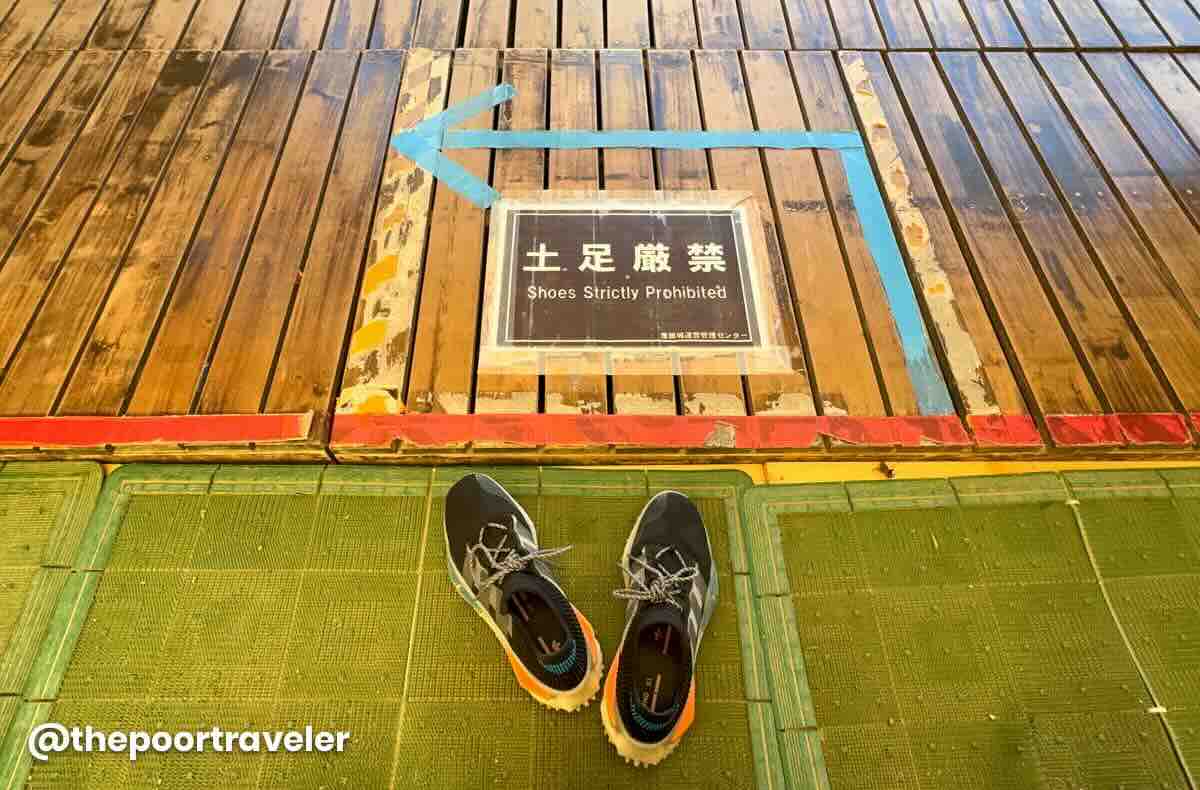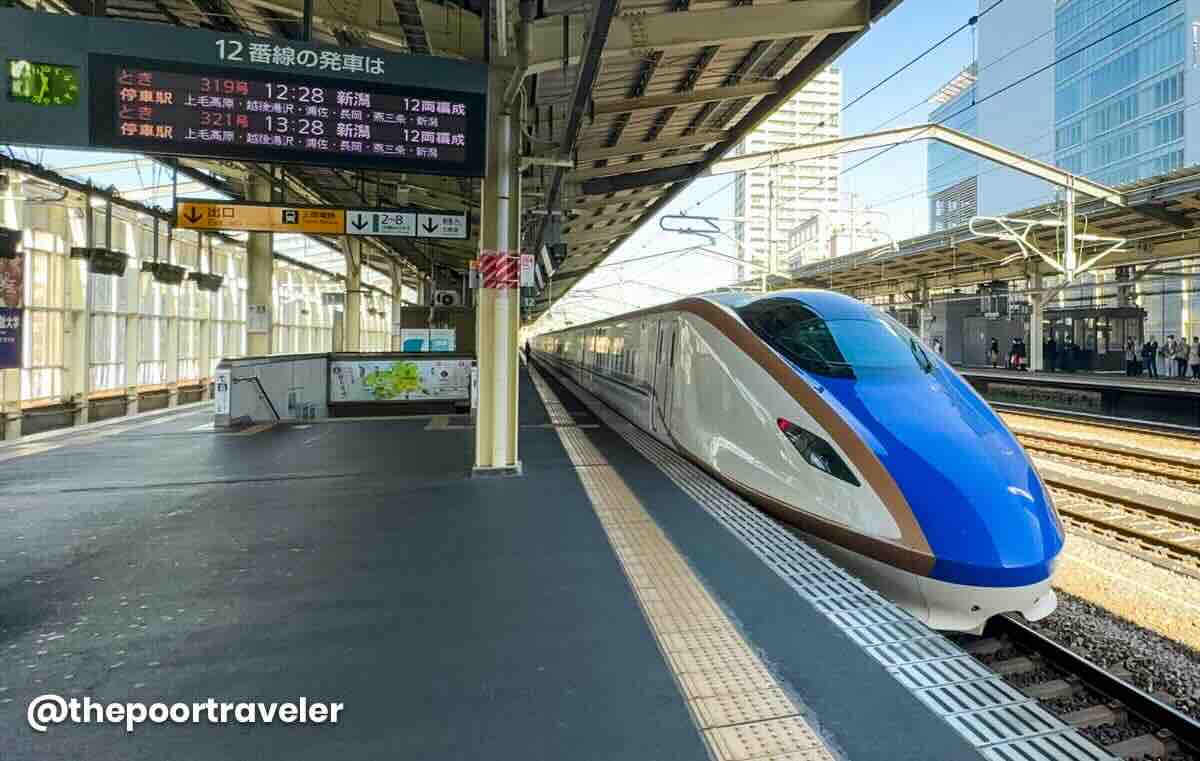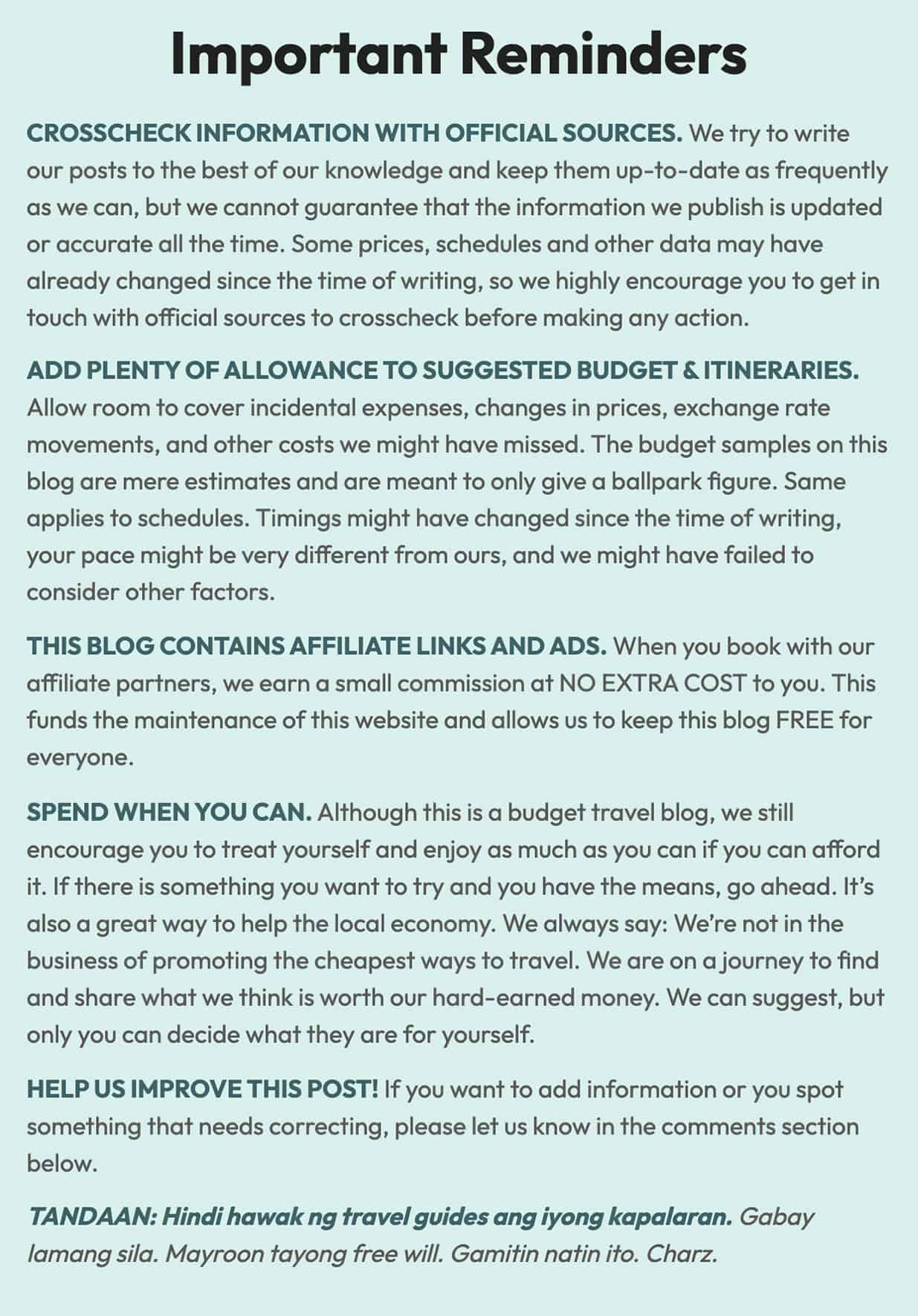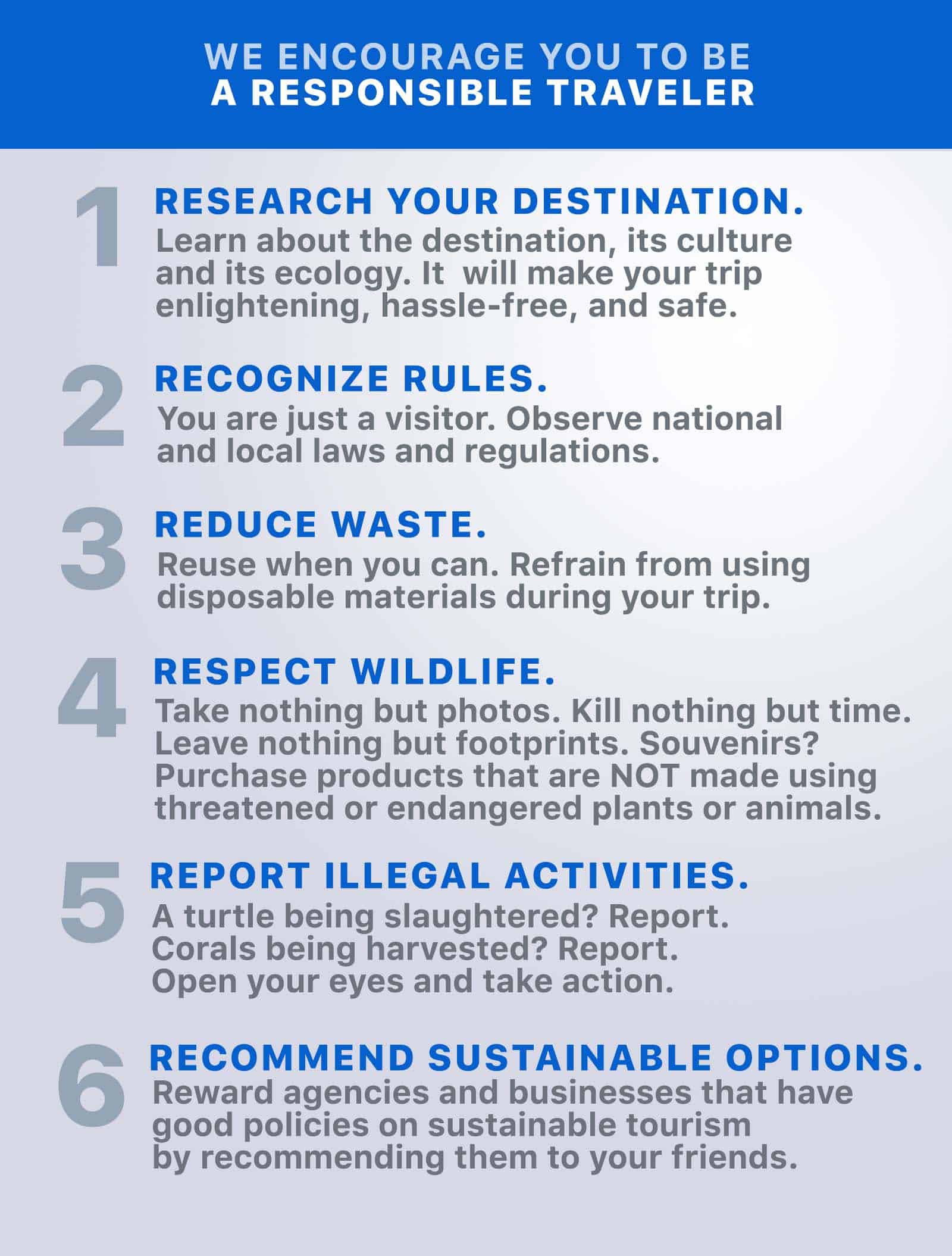Japan is a destination that attracts travelers from all over the world. With its rich culture, stunning landscapes, and warm hospitality, it’s no wonder tourists keep coming back. There are just so many places to explore that every trip feels like visiting an entirely new destination. Whether you’re hunting for the freshest sushi, exploring centuries-old castles, or trying to see the cherry blossoms, Japan promises an unforgettable experience.
Aside from the Philippines, Japan holds a very special place in our hearts — it’s actually our most visited country ever. But we still remember our first trip to the Land of the Rising Sun, partly because we ran into quite a few hiccups along the way. So we want to share with you some of the things we wish we had known back then.
WAIT, WAIT, WAIT! If your are traveling soon and still on the planning stage, you can also visit our The Poor Traveler Masterlist. Here, we compiled travel essentials, including immigration requirements and all our recommended hotels and tours. Just visit this page: TPT Masterlist. We have a compilation for destinations around the world.
1. Bad Timing
Japan is a fantastic year-round destination, offering something interesting in every season. However, to make the most of your trip, it’s crucial to align your expectations with your timing.
For instance, if you’re dreaming of seeing cherry blossoms, keep in mind that their blooming season is fleeting — typically lasting just a couple of weeks. Since sakura blooms at different times across Japan, you’ll need to plan accordingly. Blossoms appear earlier in southern cities such as Fukuoka and Nagasaki and later in northern areas like Hokkaido. To catch them at their peak, be sure to check sakura forecasts for your specific destination online before booking your trip.
If you visit during sakura season, expect major parks to be packed with both locals and tourists. To enjoy a quieter experience, consider seeking out smaller, lesser-known parks that are less crowded. Additionally, if you prefer to avoid crowds and high prices, steer clear of Japan’s busiest travel periods. Major holidays see a surge in domestic travel, making transportation and accommodations harder to book and more expensive. Here are some key holidays to take note of:
- Golden Week: April 29 – May 5
- Obon Festival: August 13 – 15
For those traveling in winter, keep in mind that daylight hours are shorter and many establishments close earlier, especially around New Year’s Day. On the other hand, if you’re visiting during summer, be prepared for intense heat and humidity, sometimes even hotter than in the Philippines. If your trip falls in July or August, make sure to pack light, breathable clothing to stay comfortable while exploring.
2. Dismissing Hotel Location
As budget travelers, our top priority when booking accommodations is always the price. However, cost isn’t the only factor to consider. Location plays a significant role too. Whether we’re booking a hotel, hostel, or apartment, we always aim for accommodations that are near a train station. Japan’s transportation system, particularly its trains, is vast and efficient, and many of the country’s major attractions are easily accessible from train stations. In fact, train stations in many cities also serve as hubs for bus pickups and drop-offs, making them central points for getting around.
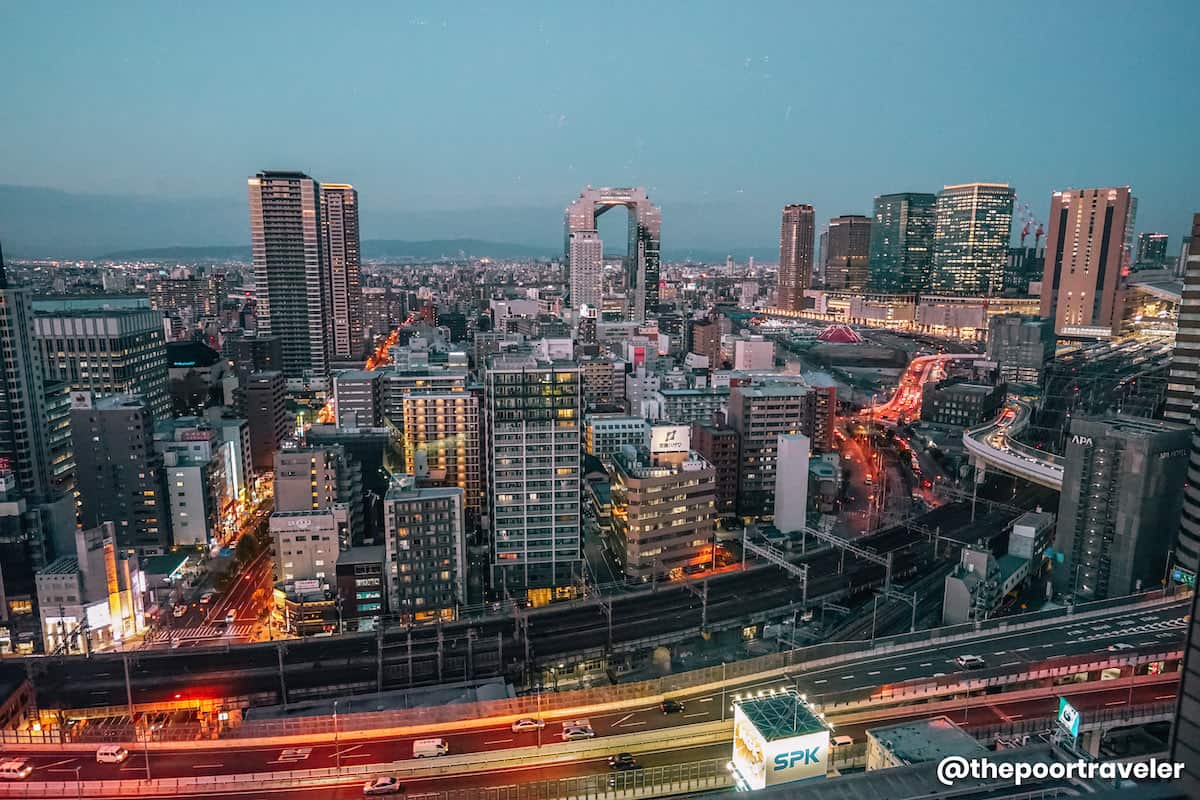
While it’s not always possible to find a place that’s right next to everything, having a train station within walking distance can greatly simplify your travel experience, whether you’re taking the train or hopping on a bus. It doesn’t have to be very close to the main station. As long as it is within walking distance, it’s good. Japan is also known for being very safe, so walking even at night is generally fine.
That said, you might be tempted to go for a cheaper accommodation that’s farther from the station. While this can save you money upfront, consider the extra cost and time of transportation. The money you save on a more distant place might be offset by train or bus fares, and you’ll also spend more time commuting and walking, which can drain your energy. In these cases, it’s often worth it to spend a little more on a place that’s closer to the station, as the convenience and time saved can make the slightly higher price worthwhile in the long run.
3. Traveling Without Insurance
Japan is one of the safest countries in the world, with a low crime rate, exceptionally polite people, and well-planned cities that make navigating urban areas seamless. However, safety doesn’t mean immunity from unexpected incidents. No one plans to get sick, have an accident, or lose their baggage, but these things can happen, and dealing with them while traveling can be stressful and costly.
That’s why, even though travel insurance isn’t mandatory when visiting Japan, we highly recommend getting one. It ensures that you’re covered in case of medical emergencies, trip cancellations, lost luggage, or accidents, allowing you to enjoy a worry-free trip. Travel is unpredictable, and no matter how carefully you plan, risks are always present. We know several travelers who have encountered unexpected illnesses or accidents but didn’t have to worry about expenses because they were insured.
So, whether you’re traveling to Japan or any other destination, investing in travel insurance is always a smart decision. It’s a small price to pay for peace of mind and financial protection while exploring the world.
For international destinations, consider PGA Sompo’s TravelJOY Plus insurance. You can GET IT HERE! Don’t forget to use WORTHIT for a special affordable rate.
4. Getting Confused About Tourist Passes
Japan’s transportation industry is incredibly competitive, with numerous railway and bus companies offering a wide variety of passes. From city-specific and prefectural passes to regional and nationwide options, each comes with its own advantages and limitations. Choosing the right one can be overwhelming, but selecting the most cost-effective pass depends entirely on your itinerary.
The most well-known pass is the JR Nationwide Pass, but a common question we get is whether it’s actually worth it. The short answer? It depends on your travel plans. Many people assume they need a JR Pass, but if your trip involves just one or two nearby cities, it’s often not worth it. The JR Nationwide Pass provides the best value when your trip includes multiple long-distance journeys. If you’re only traveling between Tokyo and Yokohama or exploring Osaka, Kyoto, Nara, and Kobe, you won’t need a nationwide pass. In these cases, a regional pass is the better option.
Speaking of regional passes, Kansai alone offers a staggering number of choices, including the Osaka Amazing Pass (city-wide), Kansai-Thru Pass, Hankyu Pass, Hanshin Pass, Kintetsu Pass, and JR Kansai Pass. The best one for you depends on your itinerary and which train lines you’ll use most often. If you need a detailed breakdown of these passes, check out this article: JAPAN TRAIN & BUS PASSES.
Beyond Kansai, Chubu (Central Japan), Kyushu, and Tokyo also have their own transportation passes, giving travelers an abundance of options. With so many choices, it can be challenging to find the best fit. But in most cases, there’s a regional or city pass that will be more useful than a nationwide JR Pass. Before purchasing any pass, always compare prices with individual tickets and choose the one that best matches your planned routes!
5. Sticking to Trains
Many tourists, especially Filipinos, are easily amazed by Japan’s trains — and for good reason. The Shinkansen or bullet train is an engineering marvel, offering a smooth, fast, and efficient way to travel. Plus, with Japan’s extensive railway network, it’s easy to default to trains as the primary mode of transportation. However, train fares — especially for bullet trains — can be quite expensive, particularly if you don’t have a rail pass.
If you’re on a budget, buses are a great alternative worth considering. For example, when traveling between Fukuoka and Hiroshima, a bus ticket is significantly cheaper than a Shinkansen fare. Yes, the travel time is longer, but the savings can be substantial.
For longer journeys, overnight buses offer even more benefits. First, the fare is much cheaper than taking a train. Second, because you’re sleeping on the bus, you save on one night of accommodation, which is a big deal considering how expensive hotels in Japan can be. Third, some places in Japan are not accessible by train, but buses can take you there conveniently. And don’t worry — the buses in Japan are clean, quiet, and comfortable.
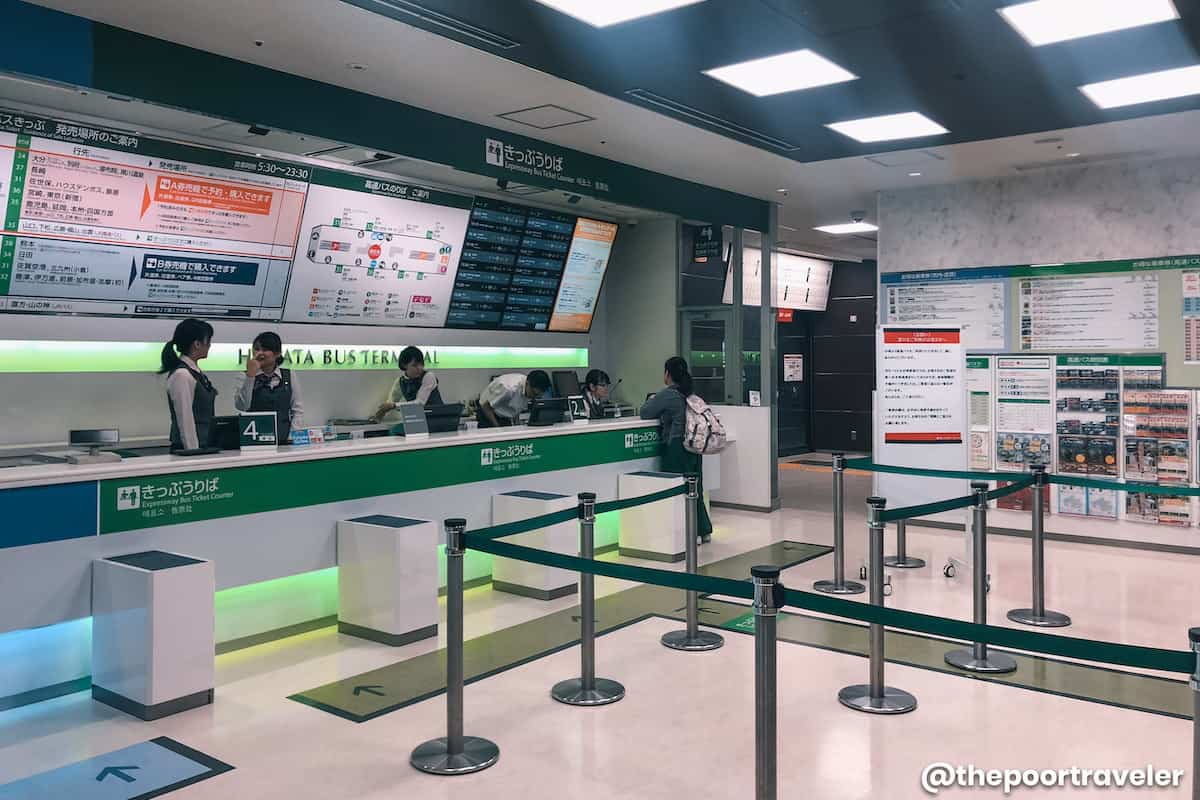
Of course, overnight buses aren’t for everyone. If you’re traveling with kids or prefer a more relaxed journey, it might not be the best option. But if you’re physically able and don’t mind sleeping on a bus, you can save a lot while still exploring Japan efficiently!
6. Eating Out All the Time
One of the biggest expenses when traveling is food. While we absolutely encourage you to try local restaurants and immerse yourself in Japan’s amazing food scene, eating out all the time isn’t the most budget-friendly option.
When we visit Japan, we try to strike a balance between eating at good restaurants and saving money by buying meals from supermarkets. Japanese supermarkets are a great place to explore, especially if you love Japanese food products. But more importantly, many of them sell pre-cooked or ready-to-eat meals at a much lower price than restaurants — or even convenience stores!
TIP! Visit the supermarket around 7 PM or 8 PM, just before closing time. Many supermarkets discount their remaining ready-to-eat meals, sometimes by up to 75%, just to sell out their stock. If your accommodation is near a supermarket, this can be a huge money-saver!
Of course, this doesn’t mean you shouldn’t eat at restaurants. You definitely should! Japan has plenty of affordable options, including random ramen shops, so you don’t always have to break the bank to enjoy good food.
One last thing: Japan is full of vending machines. You’ll find them on every street corner, offering a quick and convenient way to grab drinks or snacks. But as tempting as they are, buying from vending machines all the time adds up. Supermarkets and even convenience stores usually sell the same drinks at a lower price. So if you’re on a budget, try to limit your vending machine purchases!
7. Leaving Passport at the Hotel
If you’re a foreign visitor in Japan, you must always bring your passport with you. It is required by the law and you might get fined if you’re caught outside without it. But aside from that, did you know that foreign tourists can enjoy big discounts when shopping in licensed tax-free shops in Japan? Just look for the “Tax-Free” sign or logo! If your one-time purchase is at least ¥5000, you don’t have to pay the tax.
Some stores, like Don Quijote, have dedicated tax-free counters where you can process your purchase without tax. REMINDER! You must present your passport at checkout. If you forget it, they won’t honor the tax-free discount, so always bring it with you when shopping. After processing, the store will attach a receipt to your passport, which will later be collected at the airport before you go through Immigration when leaving Japan.
That said, if you have the budget, don’t hold back on experiencing the best of Japan! Whether it’s a fancy sushi dinner, a ski trip to a snow resort, or a relaxing dip in an onsen, go for it! These experiences are unique to Japan, and indulging in them isn’t just rewarding but also a great way to support the local economy.
OK, the next items on this list are more like common faux pas or social slip-ups that many tourists unknowingly commit. While these are not illegal — and it’s highly unlikely that you’ll be thrown in jail for them — they can leave a poor impression.
The Japanese are known as some of the most polite and helpful people in the world, often going out of their way to assist tourists. As visitors, it’s only right that we show the same respect by learning and following their customs. In Japan, many unwritten rules shape everyday life — rules that both locals and tourists are expected to follow. The more familiar you are with these cultural nuances, the smoother and more rewarding your trip will be.
So, knowing what to avoid can go a long way in helping you connect respectfully with locals and fully enjoy your trip.
8. Talking Loudly on Public Transport
Japan’s public transportation system is not only efficient and reliable but also remarkably quiet. Whether you’re on a train or a bus, it’s important to keep noise to a minimum. While it’s okay to chat with your travel companions, make sure your voice is low and respectful. Other passengers don’t need to hear your conversation.
One thing you should absolutely avoid is talking on the phone while commuting. In Japan, many locals use their travel time to rest or unwind, especially because of the country’s demanding work culture. As tourists, it’s essential to respect this unwritten rule and help maintain the peaceful atmosphere.
9. Ignoring Escalator & Elevator Etiquette
Japan has many unwritten rules when it comes to using escalators and elevators, and as tourists, it’s good to follow local etiquette to avoid unnecessary disruptions.
In most of Japan, including Tokyo, people stand on the LEFT side of the escalator and leave the right side open for those who want to walk or overtake. However, Osaka and most of Kansai do it the opposite way — you stand on the RIGHT side, and people walk on the left.
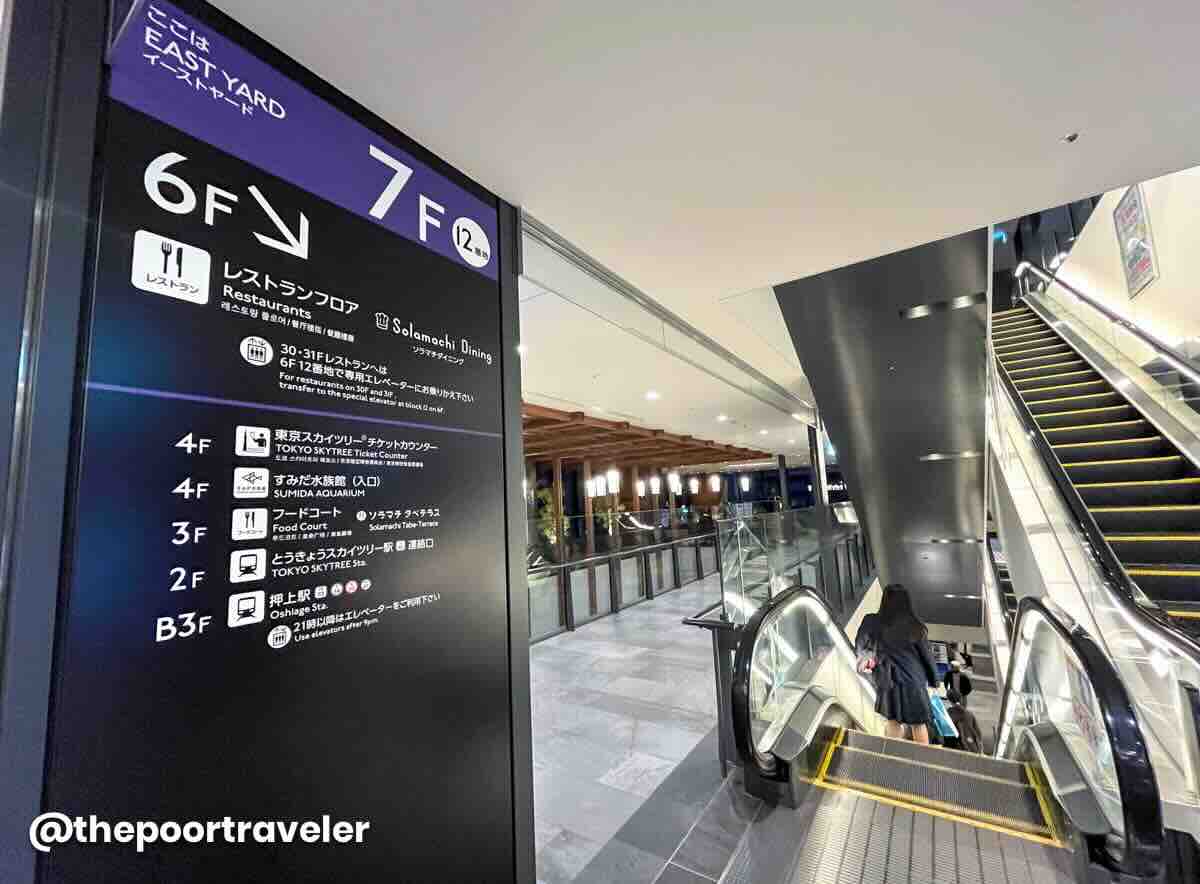
Why the difference? According to a nikkei.com article, during the Osaka Expo in 1970, they adopted the global standard of standing on the right. However, a lot of people also question whether this is the real reason.
But just remember, for most of Kansai Region, you stand on the right of the escalator. That includes Osaka, Kobe, Nara, Wakayama, and more. However, Kyoto is an exception, because apparently, the locals prefer to stand on the LEFT. But once you’re there, you’ll notice that both left and right standing can be seen, possibly due to the high number of tourists. To be safe, just observe the people around you and follow what they’re doing.
Some cities, like Nagoya and Saitama, have actually started banning walking on escalators due to safety concerns. More places may follow suit in the future. However, since it takes time for people to adjust, you might still see people walking on escalators in these areas.
Japan also has unspoken rules for using elevators. First, give priority to PWDs or Persons with Disabilities. If you’re not carrying anything heavy and are able, consider using the stairs instead. Second, hold the door. If you’re standing next to the control panel, you’re expected to press the buttons for others and hold the door open. And if everyone is getting off at the same floor, you should exit last after holding the door for others.
These small gestures are part of Japan’s culture of respect and consideration, which makes public spaces more efficient and pleasant for everyone!
10. Blocking Dedicated Pathways
Walking around Japan is such a fun experience! The streets are clean, the surroundings are peaceful, and there’s always something interesting to see. Sometimes, even if we can take the train, we choose to walk because it just makes us happy. But if you plan on exploring on foot, there are a few things you should know.
First, pay attention to the sidewalk signs. In many places, there are designated lanes for pedestrians and cyclists, so make sure you’re walking on the correct side. If you ever hear a small bell ringing, that’s a cyclist politely asking you to step aside — there won’t be any loud honking here! Also, if you’re new to the area, try not to wear earphones while walking. They might prevent you from hearing important signals like bike bells.
You’ll also notice yellow, textured pathways on sidewalks, stairs, crossings, and train platforms. These are called Tenji blocks, and they help visually impaired individuals navigate the area. Just be mindful not to block these paths!
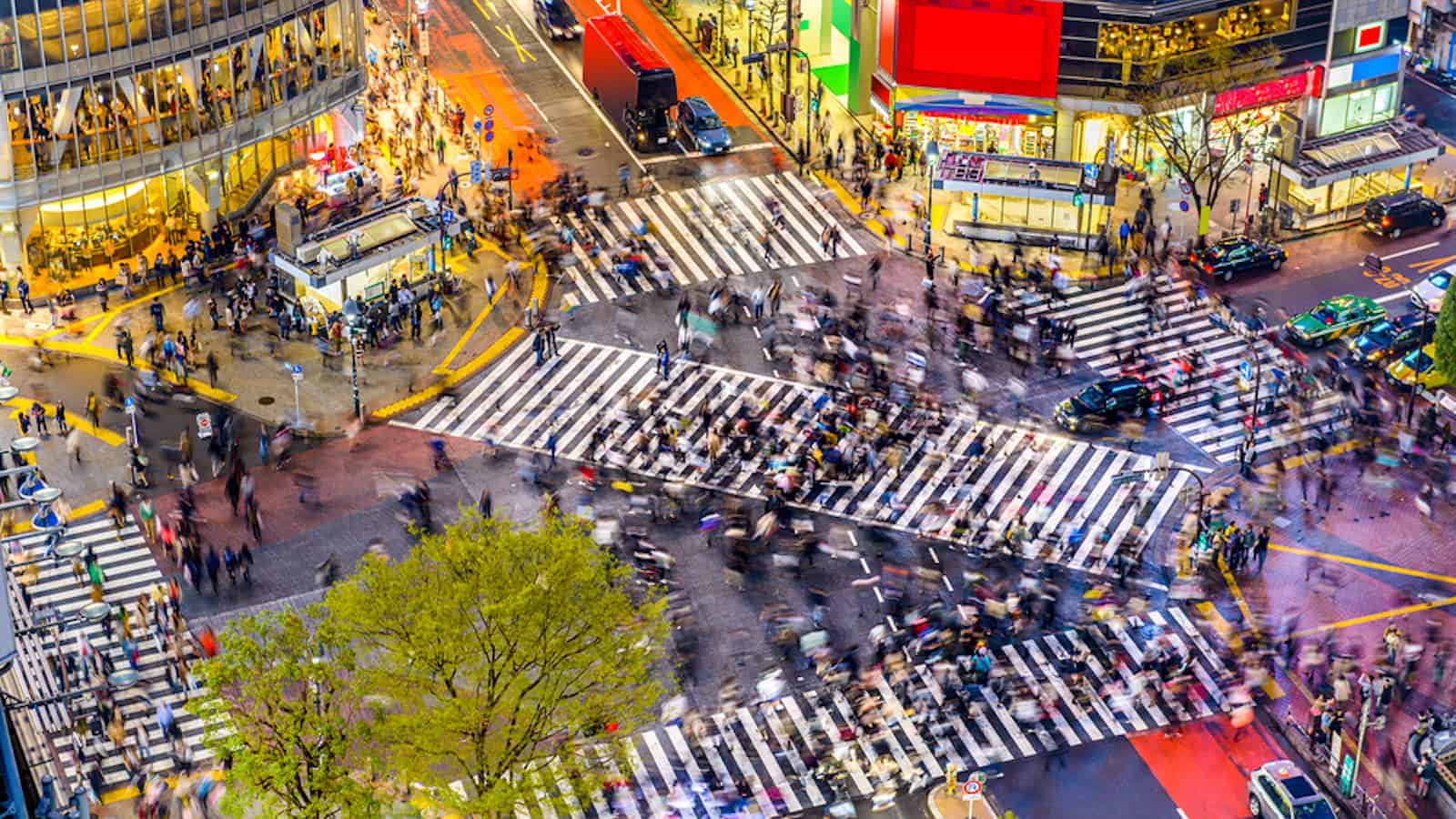
At pedestrian crossings, you might hear a bird-like sound coming from the stop lights. It starts slow and speeds up as time runs out to cross. This is super helpful for visually impaired individuals, but it’s also a great way to remind yourself when you need to hurry up!
Japan’s infrastructure is designed to be efficient and accessible for everyone, making walking not just easy but also an amazing way to experience the country. So go ahead, take a stroll, and enjoy every step of your adventure, but always make sure to be considerate of others too.
11. Eating While Walking
Eating in public spaces isn’t illegal in Japan, but eating while walking? That’s a big no-no. It’s just not part of the culture. If you grab a snack from a convenience store, the best thing to do is eat it while you’re still in the area, either inside the store or just outside, as long as you’re not on the move. If you’re at a park, find a bench and take your time. And if you buy a drink from a vending machine, it’s common practice to drink it right there next to the machine instead of sipping while walking.
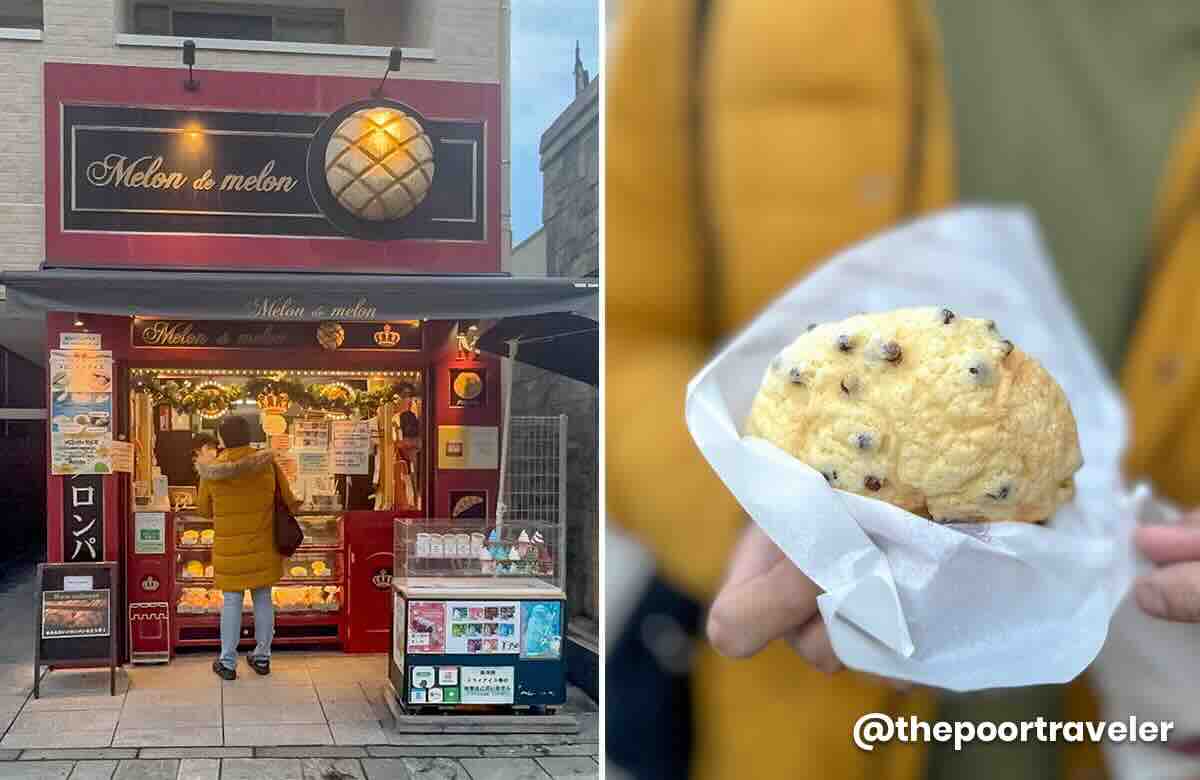
There are some practical reasons for this, like avoiding spills and keeping the streets clean, but there’s also a cultural side to it. A Japanese tour guide once told us, “If you eat, just eat. Respect your food.” They take food seriously, and they believe you should be present in the moment while eating. Honestly, it makes a lot of sense because you enjoy your food more when you’re not distracted. So next time you grab a bite in Japan, take a moment, find a spot, and really savor it!
12. Miscalculating Food Serving Size
Someone once asked us if it’s okay to leave leftovers when eating out in Japan or if it’s considered rude. The short answer? It’s best to avoid it. Wasting food is generally frowned upon anywhere, but in Japan, food is deeply respected, along with the people who prepare it. If a local invites you to their home for a meal, finishing everything on your plate is a must. Leaving food behind might make your host think you didn’t enjoy it.
If you’re dining at a small, family-run ramen shop, a mom-and-pop restaurant, or a sushi bar — especially if the chef prepares your meal right in front of you — leaving leftovers is considered impolite. The one exception? Ramen broth. It’s pretty normal for people to leave some soup behind.
At food courts or fast food places, nobody will call you out if you don’t finish your meal, but it’s still best to avoid wasting food. We get it: sometimes it’s hard to gauge portion sizes in a different country. In Japan, though, certain dishes tend to come in big servings by default. Ramen is always a hefty bowl, okonomiyaki is usually large and great for sharing, and donburi (rice bowls) often have a lot of rice, even if the toppings don’t seem like much. Some meals even come with unexpected side dishes.
That said, portions in Japan aren’t always huge. They can actually be smaller compared to Western countries. It really depends on the dish and the restaurant. So when in doubt, just ask! If you’re feeling shy, the safest approach is to assume the serving size is big. You can always order more if needed, but leaving food behind can feel disrespectful to the person who cooked it, especially in smaller eateries. Better to play it safe and order extra later than risk wasting food!
13. Keeping Shoes on at Certain Sites
One thing you’ll notice while exploring Japan is how much the culture values cleanliness. It’s a pretty big deal here, and it extends to the simple act of taking off your shoes when entering certain places. Sure, in most hotels and restaurants, you’re fine keeping your shoes on, but there are definitely places where you’ll need to leave them at the door.
Temples and original castles are prime examples. When you visit these spots, you’ll usually find an area dedicated to shoe removal. Often, there’s a shoe cabinet where you can store them while you explore, or in some cases, they’ll even give you a plastic bag to carry your shoes around with you.
Traditional restaurants also have this rule, as do some churches. So, when you’re touring around Japan, be ready for that moment when you’ll have to slip off your shoes. So make sure your socks are up to the task — nothing too old, no holes, and definitely no funky smells! LOL
14. Stepping into an Onsen Right Away
One of the most relaxing and unique experiences you can have in Japan is soaking in an onsen, but there are a few things you should know before diving in.
First, if you have tattoos, you might hit a small roadblock. Traditionally, tattoos carry a stigma in Japan, and many onsens do not allow them. However, there are tattoo-friendly onsens in several cities, so just do a little research online. Sometimes, small tattoos are okay, but when in doubt, it’s always best to ask the staff beforehand.
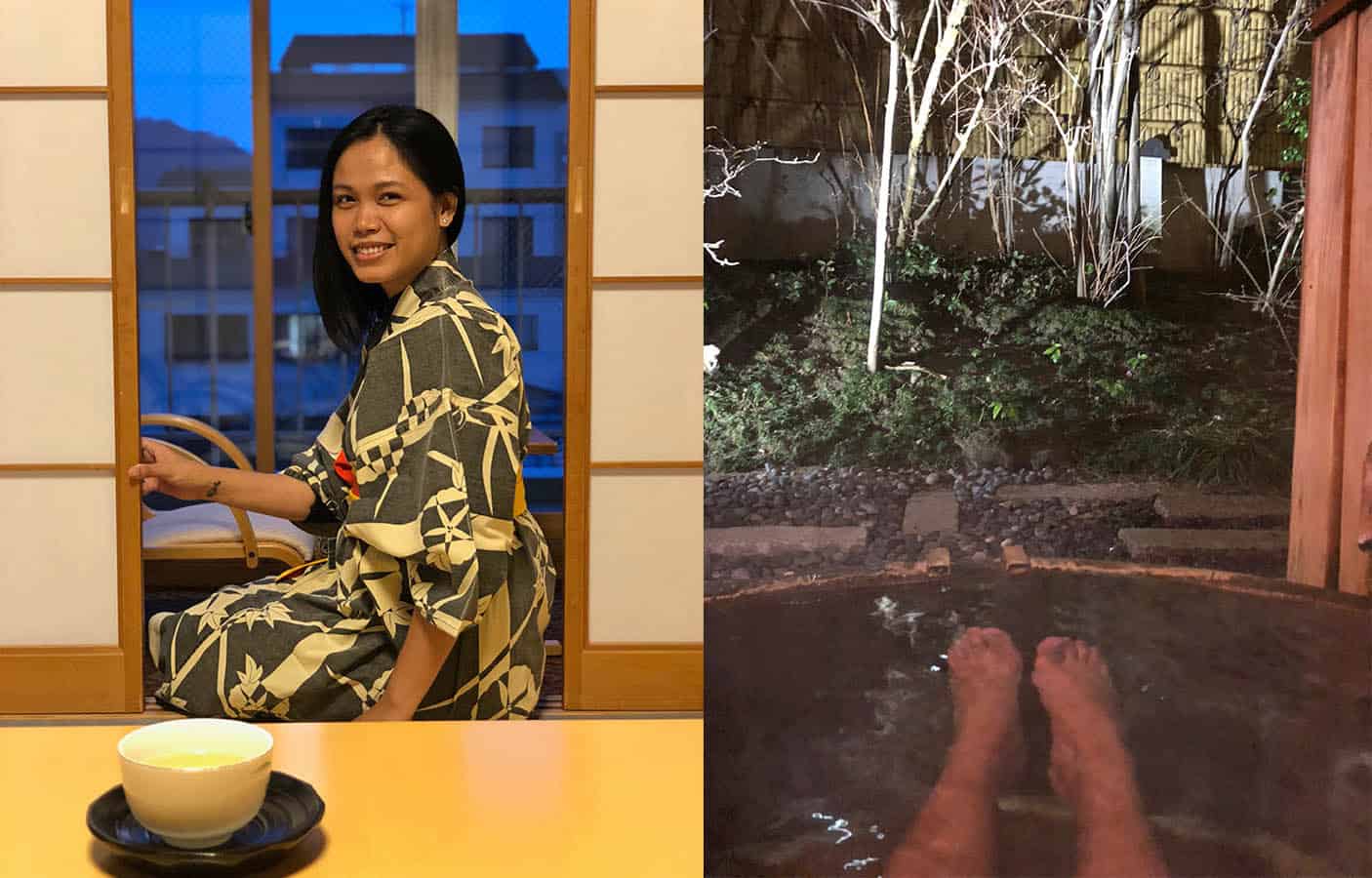
When it comes to the type of onsen, there are two main options: public and private. For both, you’ll need to get comfortable with the idea of being completely naked. Yes, all clothing — swimsuits, trunks, anything — is a no-go. But don’t worry, the areas for men and women are separate, and honestly, no one will be staring at you. People are just there to relax. However, if you’re not ready to strip down in front of strangers, a private onsen in a ryokan or a traditional inn might be a better choice.
If you choose to go to a public onsen, there are some important rules to follow. First, make sure to wash yourself thoroughly before dipping in. Most onsens provide shower areas with handheld shower heads. The key is to be clean before soaking!

Second, remember that onsens are all about relaxation. Keep the noise level down, and don’t splash the water around. It’s not a swimming pool, so avoid any kind of swimming or vigorous activity. Third, while it’s common to bring a small towel with you, make sure it doesn’t touch the water. Some people like to place it on their head, but it shouldn’t be wet or wrung out in the water.
Finally, after you’re done soaking, be sure to wipe off any excess water before heading back to the locker room. This keeps things clean for everyone else. Enjoy your onsen experience, and just remember: it’s all about relaxation and respecting the space!
15. Tardiness
Being punctual in Japan is extremely important, and it’s something that’s ingrained in the culture. We know it can be easy to run late, but especially in Japan, where everything operates with impeccable precision, being late is a big no-no. We’ve even experienced a situation where a train was delayed, and the staff personally apologized to every single passenger, one by one. Not just over the intercom, but face to face.
If you’re joining a group tour, showing up on time is crucial. When you’re part of a group, it’s not just about you— other people are depending on you. That means you should always be aware of the meeting times, especially when it comes to getting back to the bus or group rendezvous points. If you cause a delay, don’t be surprised if the guide calls you out. We’ve seen it happen. Once, someone was just five minutes late, and it was a huge deal. The guide and the rest of the group were visibly frustrated. Thankfully, we’ve managed to avoid such situations, even after late nights!
When you’re traveling on your own, it’s a bit more relaxed, but there are still some things to consider. First, remember the time schedules for public transportation, particularly for bullet trains with reserved seats. If you miss your scheduled train, you’ll likely have to rebook and lose time and money — and no one wants that. Also, some attractions are a bit far from the city center, and buses may only run on an hourly schedule. Miss your bus, and you’ll be stuck waiting for another hour, which can throw off your plans.
Another thing to keep in mind is that many places close earlier during the winter months, so if you arrive too late, you may miss out on some opportunities. Also, when visiting popular photo spots, be considerate of others. Don’t hog the perfect shot and give other visitors a chance. The same goes for onsens and hotel checkouts. If you’ve booked a private onsen, make sure to show up on time and don’t overstay your reservation. And when it comes to hotels, be sure to check out on time to allow housekeeping enough time to prepare for the next guests.
Being mindful of time will help you make the most of your trip and keep everything running smoothly!
Updates Log
2025 5 3 – First uploaded
Written by: Yosh Dimen and Mariah Cruz
Photos by: Yosh Dimen
Edited by: Asta Alvarez
